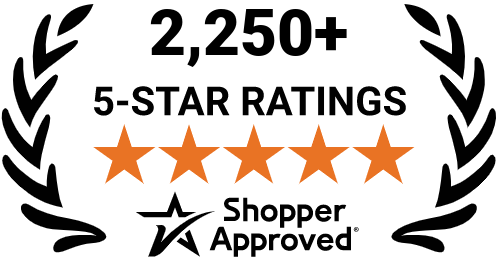What Is Castile soap?
If you are into organic beauty products, alternative cleaning remedies, and environmentally-friendly products, chances are you have heard of a castile soap. People are getting rid of their vinegars and throwing away their baking sodas for this soap--so what is the big deal? What makes castile soap so popular and so attractive to people?
To answer that, we have to find out what is a castile soap and what makes it different from the usual soap that you may know.
What is Castile Soap?
Castile soap is a kind of soap that is made out of vegetable oils and free of any oils extracted or made from animals. It is also free of synthetic materials. This is what some even call it the “vegan soap,” since it is 100% free of ingredients made of or coming from animals.
The soap got its name from its place of origin, which is the Castile region of Spain. The soap that was made there was a combination of olive oil and sodium carbonate which resulted in a white, hard soap. This product was sold in the Mediterranean first and eventually made its way throughout the entirety of Europe in the 16the century.
And the people back then loved it. From then, the composition of the soap evolved. Eventually, other plant based oils such as coconut, palm kernel, hemp, and jojoba oils were also used in making the soap, opening the door for countless variants and scents.
Centuries later, castile soap continues to appeal to people, and its composition and scent continues to adapt to modern times.
What is lye found in soap?
One more thing that makes castile soap different from other soaps is that it is virtually lye-free. Although it uses lye to be made, specifically potassium hydroxide, a process called saponification converts the said lye and the vegetable oils and makes it into a new, lye-free compound.
Uses of castile soap
There are many uses of a castle soap. You can use it anywhere from your face to your body to even the deepest corners of your house. Here are some of its most common uses:
For a relaxing bath
Just add a good amount of liquid castile soap to your bath, and you will get a more relaxing and more rejuvenating feeling of the bath. Some people also add in some essential oils to boost the experience and make it more relaxing.
Clean your house with it
Why not give your house the castile soap experience? An ideal mixture of it is combining 1/4 cup of castile soap to one quart of warm water. Use it as a spray to clean dirt and grime from surfaces of your house.
Soap for the baby - and the dogs, too
A good dog shampoo can be pricey and despite that, it can still contain a number of potentially harmful chemicals. The same goes for baby soap, and babies can consume a lot of it. The good news is the castile soap that you have can do the job for both.
Benefits of castile soap
Castile soap is not a new thing in the market, but it has gained tremendous amounts of popularity in the past several years, not only due to its many uses, but also its benefits not only to the individual using it, but to the environment as well.
Here are some of the benefits of using castile soap.
Eco-friendly
One of the things that appeals to a lot of people when it comes to castile soaps is that unlike traditional soaps, it is free of environmental hazard, Since it does not use synthetic chemicals and artificially-produced compounds, it produces virtually zero chemical waste.
Affordable
What makes castile soap more cost efficient when it comes to production is that it can be purchased in large amounts, cutting down on cost of smaller, individual packaging and sales. Dr. Bronner brand, for example, sells their castile soap in as big as one gallon. There are other companies, on the other hand, that offer custom filling of containers--this means that customers can bring and fill their own containers and they would have to pay according to the volume of the containers they brought.
Ethical production process
If there is one castile soap brand that managed to set the standards of production as high as it is now, it would be the Dr. Bronner’s brand. First of all, the company uses only Fairtrade-certified ingredients that are also organic as well. Most of the ingredients they used are sourced and carefully-picked from various countries such as Sri Lanka, Ecuador, Palestine, India, Kenya, and Ghana, among others.
Not only that, but the company also takes initiative in training their farmers in regenerative agriculture practices in order to have better soil health for the plants. Not only that, but the company also makes sure that workers are given the best work conditions and paid living wages.
This is important for a lot of people. In every soap that they buy, they know that they improve not only their personal lives, but also help in improving the lives of the people behind the product as well.
Where not to use castile soap
There is virtually nothing that you can use castile soap on. What you should remember is that there may be combinations or conditions or other products that may affect the usability of effectiveness of the soap.
For example, if you have hard water, the castile soap may leave behind a white residue. The same can happen when the soap gets mixed with vinegar. This is because the alkaline in the soap and the acid in the vinegar cancels each other, therefore breaking down the soap into oils--this is also the reason why it cannot be combined with lemon juice or other liquid high in acid.
If you with to use castile soap on your hair, be informed that it may not react well with most hair colors and may end up breaking down the dye of your hair.



















Kommentare (0)
Es gibt noch keine Kommentare. Sei der Erste, der einen Beitrag schreibt!